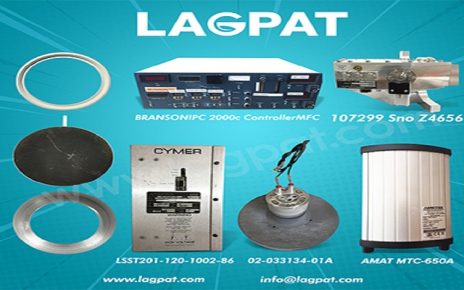It is a fantastic way to lose weight, but you will have to learn to deal with ellipticals, which can be uncomfortable. Often you’ll be limited to only moving an elliptical machine in one piece. Here are many ways to disassemble an elliptical machine that help you do the job in no time. It can be very cumbersome to carry the equipment around, particularly if you own a lot of weight training equipment, as with weights comes.
If you want to avoid tossing furniture back and forth, or you have to disassemble your unit before you move, it is dismantled.
Machines have rights and wrongs and wrongs. Moving an elliptical is difficult. This simple guide will teach you the procedure of how to disassemble an elliptical machine in a few easy steps.
Before You Begin to Disassemble Your Elliptical
You should make sure you have all your required tools ready before you begin. Your first move is to gather all the necessary resources for the job. The disassembly method is usually used in novice workers who can find it evident with only one or two tools. Still, it can also be more challenging for more experienced workers who lack the appropriate tools.
The result is delayed, or the action of making a choice is buying something you don’t need. Since you’ll have to use a hammer, screwdriver, and carry in the small bits, you’re prepared to have to repair it, at least. Plastic bags that double-zip have an extra layer of protection for this purpose. To begin, note that because of its size and weight, it is generally best to move elliptical trainers in two pieces rather than as a single unit.
You Will Require Tools
These tools are needed for working on elliptical machines:
- Keep items in small packages, so they are not misplaced.
- a unique identifier for the shipping bags
- The advantage of electrical tape is that it will keep and maintain wires clean while still doing an excellent job securing them.
- Screwdrivers and clamps come in different sizes depending on the bolt type
- to keep the parts of the computer system from possible damage during shipping
- to keep the machine’s details from potential damage during shipping.
Once everything is in place, you can begin. It would help if you only did it beforehand.
Easy Steps on How to Disassemble an Elliptical Machine:
Phase 1: Disconnect the Power Source
Many elliptical trainers are now going to be made with electronic equipment. It is designed to ensure that the wires are in use to regulate the device registers the whole system’s success.
Second, all power sources from your computer must be disabled. It offers a seal of authentication, allowing the pieces to be separated. Use electrical tape to prevent electrical links from being loose and causing damage. The tape helps prevent cables from being entangled in the concrete.
For the sake of maintenance, we must protect the cables while we reassemble the system. Otherwise, everybody will be electrocuted. Overall, it will lengthen the life of the machine’s overall availability.
Phase 2: Then Start With the Pedals
Begin removing the pedals from here. You always start with the pedals because they are the easiest to remove.
When you take each screw out of its fastener, put it in a bag and identify it. One should mention the machine element and the side from which it originates.
The longer you work you take to go through the process, the less difficult it will be to do it all over again when you get to your new home. Some machines use bags to reduce wear and tear on components, so ellipticals have less friction.
Doing this, and you will have spills on your clothes or carpet. It is just the beginning. It will develop into an intriguing problem when you have to take out the stains yourself.
Initiate the next move when the pedal is released. There is an advantage of using decals to distinguish the right pedal from your bike’s left one. There is no chance of this speeding up reassembly later.
Phase 3: Next, work on the Handlebars
The handlebar replacement method is similar to the pedal replacement method. Be careful not to damage the screws when separating the parts from the body. Since this component is made of wires, it’s a little complicated, but it shouldn’t be difficult if you’re willing to put in a little time and effort.
There are three major components in the motorcycle machine—the engine, the drive train, and the frame—which are taken apart by removing the handlebars. The elliptical machine occasionally demands that you cut off the head, so you have four rather than three parts. IT decreases the size of the part and is less of a burden to carry over the day.
Phase 4: Package the Parts
Since you will have to disassemble and reassemble your elliptical, your packaging is essential. It does whether it’s going from one place to another or moving the elliptical machine from one space to another, the elliptical is not crucial.
Few Useful Hints
Never allow the elliptical trainer to be connected to the legs and pedals. We can move the legs and pedals during transportation, making this task much more accessible. You will need to disconnect the floor, legs, and support struts.
It is the essential element. To be sure that no surface is damaged, use a wrench to loosen the bolts. It is also an excellent time to put together some of the items you might want to assemble. Until you’ve gathered up all the smaller parts during disassembly, look for key components such as screws and bolts.
If you have to pause on your way home or get extra parts on your road, you’ll be irritated. I would recommend using a label on each bag and jar to expedite the assembly process and decrease the number of parts needed. Trying to secure the bag of parts to each part with solid tape can cause damage to the machine.
If you’re moving from one house to another, consider hiring a moving company that sells air-space protectors (caulk, bubble wrap, and blankets) to make it less stressful. If you’re going to get experts moving with you, don’t neglect the stress-free elliptical packaging and numbering.
There are a fair number of elliptical trainers that use resistance magnets. To be sure the wraps are in good condition, the pastry should be removed from the machine as soon as it’s finished kneading. If harm occurs to them, the machinery will cease to work.




